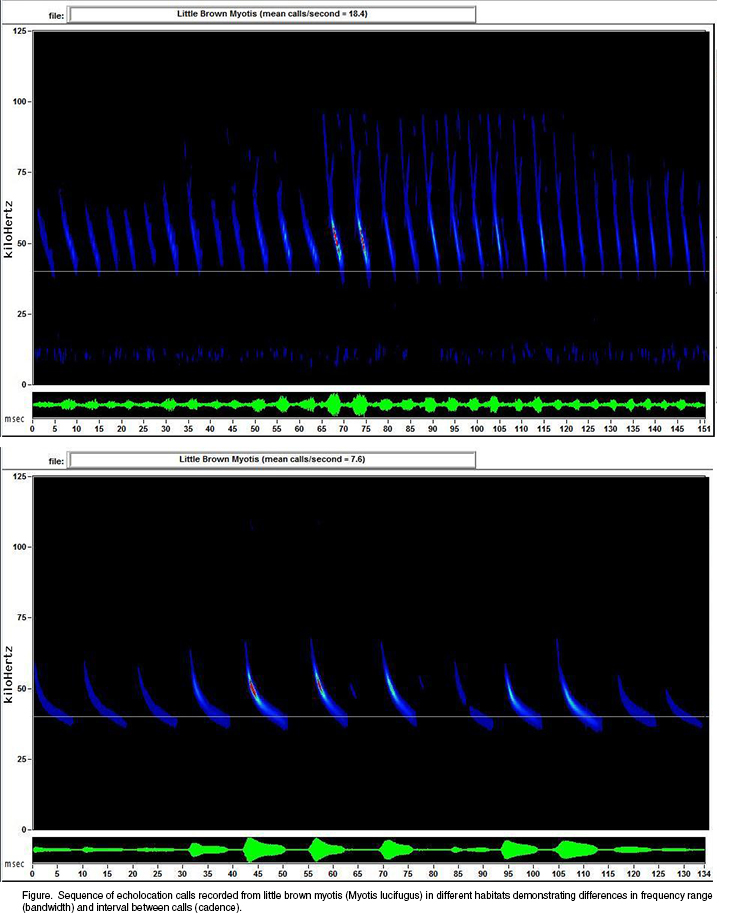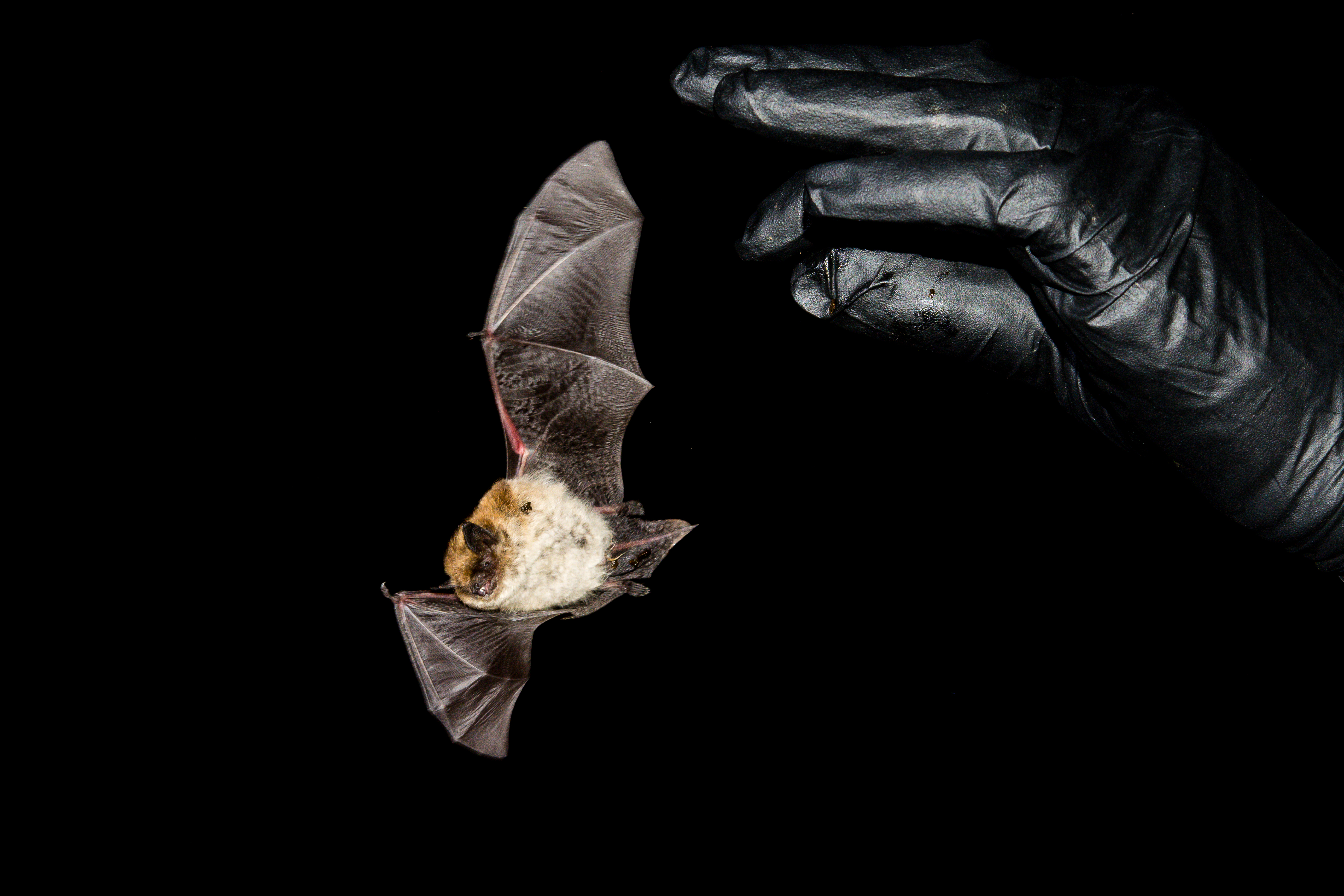LISTEN: Bats sing a different tune in different environments

 Little Brown Bat (Myotis lucifugus). Photo credit NPS/Dylan Schneider.
Little Brown Bat (Myotis lucifugus). Photo credit NPS/Dylan Schneider.
For #BatWeek, the Acoustic Atlas and Yellowstone National Park bring you a tale of two sounds. Take a listen to two calls of the Little Brown Bat, one of 13 bat species in the park:
Listen to sounds of Little Brown Bat
Hear a difference? Bats are able to vary the duration, cadence, and frequency range of their echolocation calls to meet their information needs. This clip begins with calls typical of bats foraging in cluttered environments followed by another recording (at the 14 second mark) of calls typical of bats foraging in open environments.
We can also see a difference: the first calls are shorter in duration and closer together, while the second calls occupy a narrower frequency range at a slower cadence
 Sequence of echolocation calls recorded from little brown myotis (Myotis lucifugus)
in different habitats demonstrating differences in frequency range (bandwidth) and
interval between calls (cadence).
Sequence of echolocation calls recorded from little brown myotis (Myotis lucifugus)
in different habitats demonstrating differences in frequency range (bandwidth) and
interval between calls (cadence).
Echolocation calls of short duration that sweep across a broad frequency range provide more detailed information at short distances. This is important for insectivorous bats that track aerial insects in cluttered environments. Under these conditions, the duration of the call and the interval between calls decreases to reduce the overlap between the outgoing call and returning echo. In open habitat, longer calls over a narrow frequency range are more effective for tracking prey at greater distances.
You can listen to more recordings of Yellowstone’s bat species via the Acoustic Atlas and Yellowstone National Park’s Sound Library.
Special thanks to John Treanor for the use of his Yellowstone bat recordings and to Jennifer Jerrett for producing the clip and the spectrograms.
